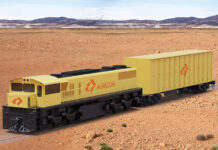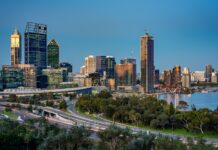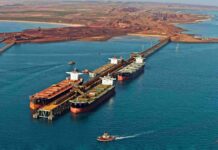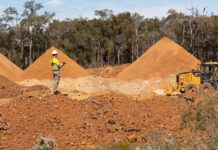Green iron: the $1b disconnect

As Australia looks to grow its green iron industry, the Institute for Energy Economics and Financial Analysis (IEEFA) has warned the country heed lessons from green iron efforts in the US and Europe.
The IEEFA reported governments in Europe and the US issued billions in capital grants to low-emissions steel projects only for several to be cancelled or delayed in its study, How to spend a billion dollars: Lessons from overseas for Australia’s green iron ambitions.
IEEFA’s analysis of schemes in the US and Europe has revealed shortcomings and commonalities that are pertinent to Australia, particularly focusing on steelmakers alone without clean, firm electricity supplies or offtake agreements in place.
Earlier this year, the Federal Government announced a $1b green iron investment fund to aid in the setup of new facilities and supply chains top facilitate domestic green iron manufacturing. About $500m of that fund will be used to transform Whyalla Steelworks into the country’s leading green iron producer.
Australia’s iron and steel manufacturing industry employs around 33,000 people and, combined with alumina and aluminium manufacturing, the metals industry links to 200,000 direct and indirect jobs, according to the Federal Industry Science and Resources Department.
There are promising prospective green iron projects across Australia which could open major economic opportunities for regions like the Pilbara and mid-west regions of WA and Central Queensland.
IEEFA global steel energy finance analyst Lachlan Wright says the grants in the US and Europe were issued to transition specific sites from blast furnaces to direct reduction to enable the switch from coal to gas or hydrogen.
“However, the grants were provided to steelmakers without any firm commitments on hydrogen supply, meaning there was a disconnect with the most costly and capital-intensive part of the supply chain,” he said.
“When the steelmakers were subsequently unable to secure suitably priced hydrogen, despite other support for potential suppliers, the projects [and] grants had to be either cancelled or amended.”
Globally, gas has been promoted as a bridge fuel for the transition to low-carbon iron and steelmaking, including in Australia. However, IEEFA’s analysis found projects that prioritised gas as an energy source struggled.
“Projects often failed where grants were targeted only at the iron or steel producer,” Mr Wright said.
“Green hydrogen direct reduced projects require significant investment in ironmaking, electrolysers and renewable energy. Therefore, integrated projects which controlled progress across all elements were more successful.”
“Similarly, failures occurred even where government support was provided both to the steelmaker and separately to hydrogen developers. This highlights the importance of focusing hydrogen production support to projects closely linked with priority-use cases.”
To avoid these failures and delays, the IEEFA recommends Australia pursues an integrated approach that combines significant investments across ironmaking, electrolysers and renewable energy.
If successful, the opportunities a domestic green iron industry represents for Australia are huge —f or both industry security and national economics.
The Mineral Research Institute of WA (MRIWA) estimates that just one 4.8mtpa green iron plant could add $85b to gross domestic product, $2.4b in real income per year and create 1540 full time equivalent jobs.
“[In the US and Europe] grants alone were not sufficient to offset rising gas and electricity prices. In Australia this can be avoided by directing grants to projects that can demonstrate binding, long-term supplies of low-cost energy,” Mr Wright said.
“This will be particularly important in Australia due to the uncertainties in the gas market and the difficulties steelmakers already face to secure affordable gas.
“Successful projects have emphasised the reinforcing nature of a comprehensive policy suite to both directly help projects as well as provide confidence to other stakeholders to execute offtakes and supply agreements.”
As the world moves rapidly to decarbonise, rising energy costs are breaking the backs of many metals manufacturers across Australia.
Last month, Tomago Aluminium began consulting more than 1000 workers at its Tomago aluminium smelter, Australia’s largest aluminium smelter, attributing potential closure to an unsustainable energy market.
Bell Bay Aluminium recently signed an in-principle 12-month power agreement to secure the immediate future of the Bell Bay Aluminium smelter as the company continues negotiations for an energy supply contract.






















